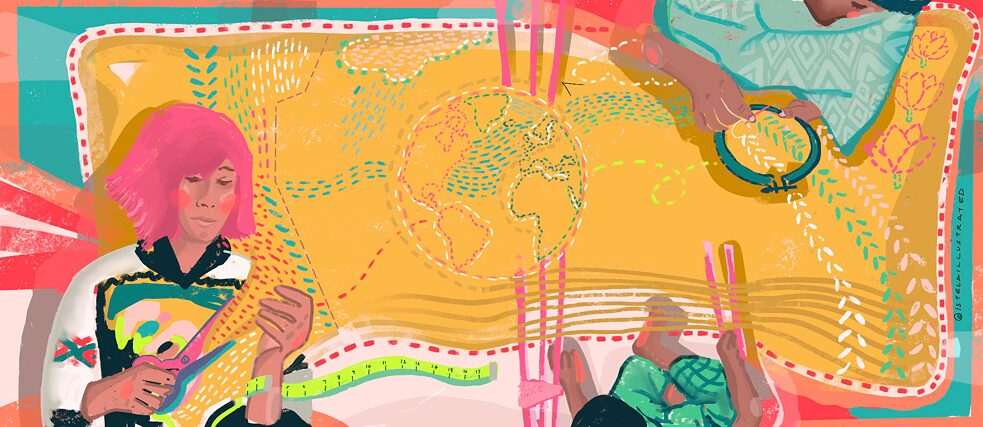Local International 2020
The Two Ends of the Supply Chain

Fashion without exploitation: The fourth exchange project by Local International for students of fashion design in Germany and Bangladesh was dedicated to sustainability along supply chains. The students now present their results and responses in an online exhibition.
By Samira Syed und Anna Kessel
The Rana Plaza collapse marked a turning point in perceptions of the global textile industry and its production conditions. Suddenly we saw our clothing not only as objects for consumption, but as something manufactured by people. The present pandemic-related standstill is creating a similar turning point.
No doubt there is corporate responsibility along the supply chains. But when it falters, the protagonists of the production processes are in demand. In this respect, designers gain a whole new meaning in terms of social and ecological responsibility.
This summer, the project Local International social design + crafts, which was launched immediately after the Rana Plaza incident, brought together young designers from Bangladesh and Germany who want to take responsibility and act sustainably. In seminars and workshops, they learned about sustainable design and production strategies for the development of individual products.
Uniting design and responsibility
In the introductory workshop, Ariane Piper from Fashion Revolution Germany emphasised that designers can help shape production processes and rethink them accordingly. However, she also advocated laws and binding regulations since voluntary solutions are inadequately implemented by companies. While political solutions are a long way off, all interest groups have to be considered.Living Blue, a social enterprise from Bangladesh in which more than 3,000 indigo farmers organise themselves in family-run farms, presented itself as a best practice example. It not only guarantees a fair wage policy, but also helps create sustainable social and economic life. The fact that the products are well received in the market is a win-win situation both for designers who are looking for sustainable materials and for the farmers.
“As fashion designers, we have an enormous responsibility to help shape and, above all, reshape the supply chains. To do this, we need a holistic understanding of the industry and we need to know every step a garment goes through,” stated Arianna Nicoletti, founder of The Green Fashion Tours, in her introduction to sustainable fashion design.
To ensure that “Made in Bangladesh” doesn’t stand for extremely low wages, poor working conditions and pollution in future, everyone in the textile value chain must be motivated to use resources responsibly. The participants of Local International 2020 want to initiate and set an example in this. Their projects can be seen in a virtual exhibition.